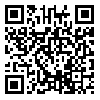Fri, Jul 11, 2025
[Archive]
Volume 32, Issue 2 (2022)
IJAUP 2022, 32(2) |
Back to browse issues page
Download citation:
BibTeX | RIS | EndNote | Medlars | ProCite | Reference Manager | RefWorks
Send citation to:



BibTeX | RIS | EndNote | Medlars | ProCite | Reference Manager | RefWorks
Send citation to:
Roasaei H, Erdim D. How Architecture is Conceived, the Case of Fondazione Feltrinelli Building in Milan. IJAUP 2022; 32 (2)
URL: http://ijaup.iust.ac.ir/article-1-620-en.html
URL: http://ijaup.iust.ac.ir/article-1-620-en.html
1- Department of Architecture, Built Environment and Construction Engineering DABC, Politecnico di Milano, Milan, Italy , hosein.roasaei@polimi.it
2- Department of Architecture, Built Environment and Construction Engineering DABC, Politecnico di Milano, Milan, Italy
2- Department of Architecture, Built Environment and Construction Engineering DABC, Politecnico di Milano, Milan, Italy
Abstract:
Architecture lays on the intersection between art and science. However, while the social effects of architecture are coming to the fore, there emerges to be a notion that technological progress in the construction sector demands more scientifically inclined research in the field. This notion can not be segregated from the technical aspect and it is through this notion that architecture can be conceived fully with respect to both art and science. Feltrinelli building in Milan may be a great example to understand how architects reinterpret place, language, and program by way of “authorial gestures”. This article tries to break down Feltrinelli building to its essential elements in order to get a better understanding of how these elements are technical, while they play a significant role in architectural poetry and make a unique whole with a distinguishing character. In order to get into essential elements, we used architectural techniques such as site survey, modeling, photography, and drawings. By the use of these techniques, we can clarify our point that the way architecture is conceived goes beyond mere functions and techniques.
Type of Study: Research Paper |
Subject:
Architecture
| Rights and permissions | |
 | This work is licensed under a Creative Commons Attribution-NonCommercial 4.0 International License. |





